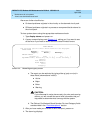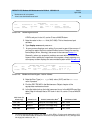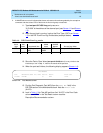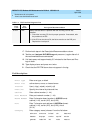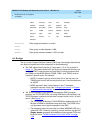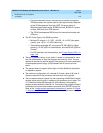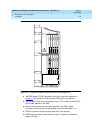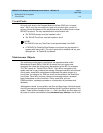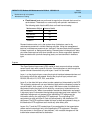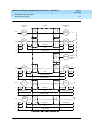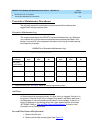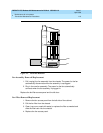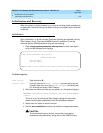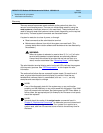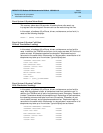
DEFINITY ECS Release 8.2 Maintenance for R8.2csi
555-233-119 Issue 1
April 2000
Maintenance for csi systems
1-15Alarm and Error Reporting
1
Alarm and Error Reporting
During normal operations, software or firmware may detect error conditions
relevant to specific MOs. The system attempts to either fix or circumvent these
problems automatically. However, if a hardware component incurs too many
errors, an alarm is raised. Errors are detected in two ways:
■ For “in-line” errors, firmware on the component detects the
occurrence of an error during ongoing operations.
■ For other types of errors, a “periodic test” or a “scheduled test”
started by the software detects the error. The technician can run
these tests on demand by using the maintenance commands
described in Chapter 2, ‘‘Maintenance Commands’’
, and the
maintenance objects in
Chapter 3, ‘‘Maintenance Objects’’
.
When an error is detected, the maintenance software puts the error in the Error
Log and increments the error counter for that error. When an error counter is
“active” (greater than zero), there is a maintenance record for the MO.
Alarms are classified depending on their effect on system operation:
— MAJOR alarms identify failures that cause a critical degradation of
service. These alarms require immediate attention.
— MINOR alarms identify failures that cause some service degradation but
that do not render a crucial portion of the system inoperable. MINOR
alarms require attention. However, typically a MINOR alarm affects only a
few trunks or stations or a single feature.
— WARNING alarms identify failures that cause no significant degradation of
service or equipment failures external to the switch. These failures are not
reported to INADS or to the attendant console.
— ON-BOARD problems originate in the circuitry on the alarmed circuit
pack.
— OFF-BOARD problems originate in a process or component that is
external to the circuit pack.
Maintenance Testing
Most troubles are reduced to the circuit pack level and can be identified by LEDs
on the circuit packs and software reports generated by the system. The
background maintenance tests in the system are divided into three groups:
■ Periodic
tests are usually performed hourly by maintenance software.
These tests are nondestructive and can be run during high-traffic periods
without interfering with calls.
■ Scheduled
tests are usually performed daily and are generally more
thorough than periodic testing. These tests are considered destructive
and are run only during off-hours to avoid service disruptions.



